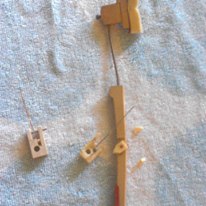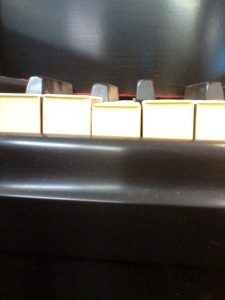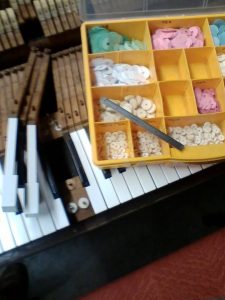Broken piano parts are hard to see from the owners point of view: The action is hidden behind the music shelf and lid. All the owner knows is that their key is not working or the sound wont stop ringing. More times that not the problem is very simple and quite easy to repair. Many mid-century pianos often seem to be broken beyond repair but upon further inspection they can often be brought back to life pretty easily.
There following are a few examples commonly broken parts that are easy to fix.
The plastic flange is notorious for breaking. The old plastic dries out, gets brittle and eventually crumbles. I see many pianos from the 70’s which are in good shape with exception to the flange. Many manufacturers decided to use plastic for this part instead of wood. The plastic back then was of a poor grade and dry rotted very quickly. Sadly as these little parts deteriorate the piano stops functioning properly. Sometimes one or two can be replaced but only to have a few more give way soon afterward.
Below is a picture of a broken plastic flange and a new wooden one. replaceable

A new set of flanges can be installed in a few hours and the piano can be up and running once again.
Another broken piano part that causes problems but is easy to fix is the punching beneath the key. These are made of felt or paper of varying sizes. Sometimes they fall apart with age or worse yet they get chewed on by those pesky mice that sneak in during the night.
Here is a picture of keys who’s punchings have gone bad:

And here is a pic of some assorted punchings. Notice the punchings fit right over the metal pins under the key:

There are many other small parts that make for big problems. I will share some more in later posts.
